Uncovering the Secret of “THE M”
The Adept Behind the Western Tradition
By Richard Cloud
Much speculation has gone into uncovering the real identity of Steiner’s M. According to one Rosicrucian Order in Germany, they know the identity of this unnamed ‘Master.’
Why is this so significant? According to Steiner’s teachings ‘the M’ must have been the present day incarnation of Christian Rosenkreutz during that time. Here I reveal the name of this person and share the journey of what I found. These discoveries were surprising to say the least.
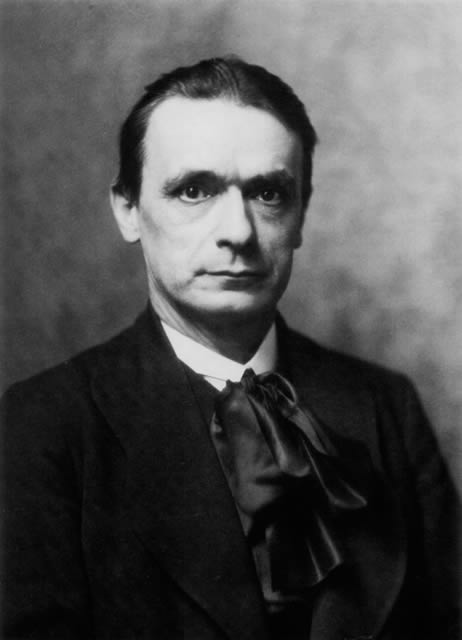 Firstly, it must be said we’ll draw upon published materials to evaluate this claim. Anyone can cross reference these statements and look at the facts. As a student of Rudolf Steiner I have always been fascinated by the identity of who the Master was and wanted to know more. My research here in no way attempts to diminish the work of Dr. Steiner. On the contrary, it is my love for this great teacher of humanity that caused me to undertake this attempt at clarification.
Firstly, it must be said we’ll draw upon published materials to evaluate this claim. Anyone can cross reference these statements and look at the facts. As a student of Rudolf Steiner I have always been fascinated by the identity of who the Master was and wanted to know more. My research here in no way attempts to diminish the work of Dr. Steiner. On the contrary, it is my love for this great teacher of humanity that caused me to undertake this attempt at clarification.
In 1907 Rudolf Steiner wrote a brief autobiographical sketch known as the “Barr Document”. In this famous document Steiner mentions his first meeting with “the M”. Since that time speculation has swirled around the identity of this individual, and no wonder. Unlike other Rosicrucian founders like Harvey Spencer Lewis or Max Heindel, who made claims of inheriting the Rosicrucian tradition, followers of Anthrosophy actually believe Steiner encountered C.R.C face to face!
Steiner himself never identified this person. He wrote and spoke extensively on the legend of Christian Rosenkreutz but never again specifically addressed the M. We know only that an agent of the M met and befriended the young Steiner before their physical meeting could occur. He says, “I did not meet the M. immediately, but first an emissary who was completely initiated into the secrets of plants and their effects, and into their connection with the cosmos and human nature.” [1]
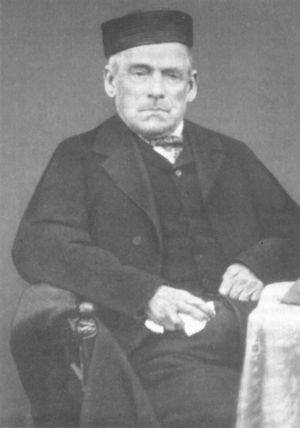
Due to the inestimable work of Emil Bock it has been determined with certainty that the identity of this messenger of the M was a Swabian herb gatherer by the name of Felix Koguzki (1833-1909).
This humble gatherer of medicinal herbs from Vienna played such a significant role in Steiner’s life that he was later immortalized by Steiner in the four Mystery Plays as the character “Felix Balde”. What relation did Koguzki have to the M? There is a clue hidden in the description of him being “initiated into the secrets of plants and their effects, and into their connection with the cosmos and human nature.” This is important, as you’ll see below.
In considering the identity of the M we must bear in mind what Steiner said about the timing of such things: “The temptation for people to fanatically idealize a person bearing such authority is too great, which is the worst thing that can happen – it would be too much like idolatry. This silence, however, is essential if we wish not only to avoid the egoistic temptations of ambition and pride (which we could probably overcome), but above all to avoid the occult, astral attacks that would be directed constantly at an individual of that level. That is why it is essential that a fact such as this not be mentioned until after a hundred years.” [2]
Steiner believed CRC to be physically incarnated during his time[3] and that the identity of this individual can only become known after a hundred years have passed, which places us precisely within the time frame wherein his identity may be publicly stated.
Upon sharing these thoughts with a friend, he informed me of an oral tradition kept among a small Pansophic Circle still active in Germany which knew the name of the Elder Brother of Rudolf Steiner. He deferred to his own initiator, who approved the sharing of this name. The timing was uncanny.
My friend then told me that Alois Mailander was ‘not only the Elder Brother of Steiner but was known as “THE Elder Brother” during that time,’ most recognizing him as the Great Adept.[4]
It caught my curiosity so I decided to look further into it, not knowing what I’d find.
It turns out: I did actually find reference to:
- Alois Mailander being called ‘the M’ in that period.
- An extremely strong indication that he was in fact C.R.C returned.
Everything hereafter is my own research, found after the lead was provided by my friend.
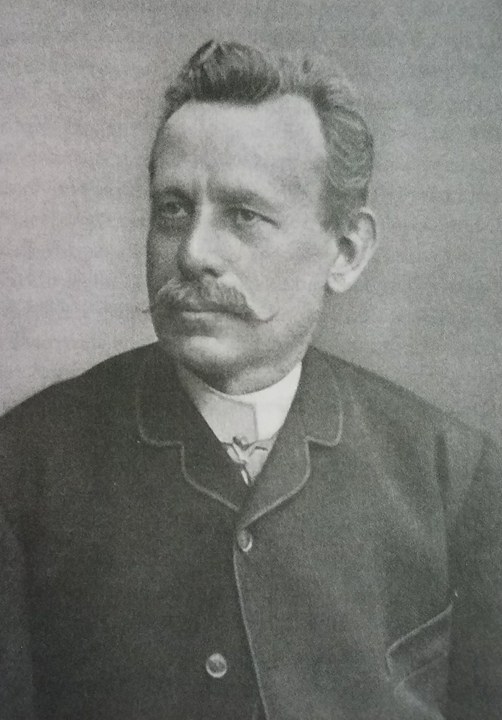
Alois Mailander (1843-1905) was an illiterate factory worker from the turn of the 19th century in Kempton. Yet despite his inability to read, not only was he Lionized in Kempten but many flocked from all around to hear his Bohemian sermons, said to have been given in the form of Christian-Sophianic mysticism. What’s more, he taught ‘Kerning exercises, by which Mailander was able to communicate with animals.’[5]
His own mentor was a Rosicrucian named Prestel which we’ll get to later.
An easy Wikipedia search showed that many leading occultists and theosophists made pilgrimages to Mailander and his Circle of Pansophists, known as the “Association of Promise” which he later opened in Dreieichenhain near Frankfurt.[6]
Among the most well known members are Gustav Meyrink, Franz Hartmann, Wilhelm Hübbe-Schleiden, Franz Gustav Gebhard, and Karl Weinfurter. Many powerful influences came from Mailander. Could this be the source for the occult revival?
Even Madam Helena Blavatsky once said of Mailander ‘that there was only one initiate in Germany and that he lived in Kempten, but that he did not belong to her school.’ [7] According to Willy Schroedter, however, Madame Blavatsky did in fact belong to Mailander’s school.[8] Steiner actually stated it was Blavatsky who broke away from the Rosicrucian Master she was associated with.[9]
One has to ask, how is it possible that Blavatsky proclaimed such high praise for the ‘only one initiate in Germany’ and yet Steiner remained entirely silent? This was despite the fact Steiner’s own friends were studying with Mailander. This silence in itself speaks in volumes unless Steiner referred to Alois Mailander in some other way or as another name? In fact, it seems he did –
Mailander was also known as “Brother John” among the initiates of the Pansophic Circle. It was believed John the Evangelist spoke through him, or more precisely, that ‘he spoke as John.’ [10] But why is this so important? Some of you will immediately know.
Students of Anthroposophy are well aware that Rudolf Steiner taught that Lazarus and John were the same individual and that he has incarnated continually throughout history. One of the most significant of his incarnations, according to Steiner, occurred when John incarnated as Christian Rosenkreutz in the 14th century.[11]
This connection is so important I’ve provided the original quote here:
“Sie sind die Überzeugung, das durch Mailänder von Zeit zu Zeit Johannes selbst spräche. Mailänder Können den Zustand bewusst herbeiführen. Er wurde, Bruder Johannes ‘genannt.”(See Friedrich Eckstein als Okkultist; Rolf Speckner).[12]/[13]
This startling bit of information immediately brought to mind the Barr Document and Steiner’s meeting with “the M”. If Mailander was known as “The Elder Brother” and “Brother John” among the Pansophists, is it possible that Steiner’s “M” stood in fact for Mailander?
Actually, I found proof of this. However naming him ‘the M’ was only natural. His own initiator Prestel was also called ‘the P’ by the Pansophists.[14] ‘The M’ only shows continuation of that tradition.
But before providing the final nail in the coffin let’s examine a few curious threads that connect Steiner and Mailander for those who want to know the full story.
First, there is Felix Koguzki, the messenger of the M. We know Koguzki was especially interested in the writings of the German mystic Joseph Ennemoser. He was a physician and mystic from south Tyrol, and an advocate of Franz Anton Mesmer’s animal magnetism. Steiner tells us Ennemoser was Koguzki’s “dearest reading”.[15] The fact that Ennemoser was from south Tyrol gains significance when we learn that Anna Mailander (Alois Mailander’s mother) is from the very same province.[16]
As mentioned, Steiner depicts Koguzki as knowing the secrets of plants. This would make sense because in Mailander’s circle there was a teaching known as “Formenlehre” (Morphology), which was a doctrine of forms wherein “each letter of the alphabet, plant, or animal had a certain symbolic value” and has been described as “a kind of primitive derivation of Jakob Bohme’s theosophy.” [17]
Yet another link between Rudolf Steiner and Alois Mailander is the teaching that Christ’s return would occur etherically and not physically. Mailander-John’s letters (usually dictated by him to followers) are full of reverence for the Christ and speak often of his return being an etheric manifestation.[18]
This delicate connection continues to strengthen when we learn of other known occultists who were intimately familiar with both Steiner and Mailander at the same time. One such person was Friedrich Eckstein. Steiner once wrote to Eckstein that there were two events in his life that “I counted so very much to be the most important of my existence, and I would be completely different if they had not entered. I must be silent about the one, but the other is the fact that I got to know you. What you are to me, you know better than I do myself; but I know I must thank you infinitely.”[19]
The essential key here is that Eckstein was in fact Mailander’s own student.[20]/[21] We have to question, was the other great event of Steiner’s life the meeting of CRC in Mailander?
The exercises taught by Mailander from the Kerning operations actually provide a source for Steiner’s own occult practices. Mailander prescribed exercises using formulations of the word IAO with other letters of the alphabet, applied with the aim of permeating and transforming the body.[22]
The prominent Theosophist and occultist Wilhelm Hubbe-Schleiden was another individual acquainted with both Steiner and Mailander. Hubbe-Schleiden was the president of the German branch of the Theosophical Society of which Steiner was to become General Secretary, and in 1902 handed over the Presidency of the branch to Steiner. Hubbe-Schleiden later fell out with the German Pansophists, one reason being because he would not do the work prescribed to him by “Brother John.”
Mailander attempted many times to get Hubbe-Schleiden to perform the mental exercises necessary for his advancement but Hubbe-Schleiden would not perform the them as prescribed. This resulted in Mailander eventually telling him:
“I have had a look at your bodily condition according to your wish, but have received a completely different result from your view… the fact that your work is not spiritually successful or that the strength for it has disappeared is not true and rests more on a morbid imagination.” [23]
Finally, the most revealing discovery is the diary entry of theosophist Clemens Driessen on September 26, 1891. In this entry Driessen is speaking of Hubbe-Schleiden’s progress with Mailander and mentions that Hubbe-Schleiden was not satisfied, but “This too appears to me that he’s in opposition to the approach of the M(ailander), who is critical towards him, but perhaps only as far as the intellectual creative-imagination teachings are concerned..’
When I saw that, I was blown away. Here is the original quote:
“Dies tritt, scheint mir, auch darin zu Tage, dass er sich mit dem M.[ailänder] in Widerspruch setzt, zu ihm sich kritisch verhält – vielleicht allerdings nur was die intellektuellen Vorstellungsbilder angeht”. [24]
Here we have proof of Mailander being specifically referred to as “the M” by occultists around him.
But he wasn’t only called the M’ – he spoke as John,
who was C.R.C according to Steiner.
In light of all these facts I am obliged to think my friend’s oral tradition is correct and that Steiner’s “M” may very well have been Alois Mailander. It has been over a hundred years since his death so I believe there is no harm in speculation on these matters, and after all its revelation from the Pansophists is rather timely.[25]
May the Roses Bloom upon your Cross.
Richard Cloud
richard.cloud9 <at> gmail.com

For additional reading, try our previous Steiner article here: Or read our other article on Steiner and Mailander.
Alternatively, read the full Anthroposophy Rosicrucian Review of Rudolf Steiner only available on this blog.
Return to HOME PAGE for the Rosicrucian Tradition website.
[1] GA 262, Rudolf Steiner and Marie Steiner-von Sivers: Correspondence and Documents 1901-1925
[2] The Secret Stream, Rudolf Steiner, pg 135
[3] “Christian Rosenkreutz is incarnated again today.” IBID
[4] Mailander was the disciple of Prestel, a Rosicrucian of remarkable psychic ability. The Pansophists of Germany today claim to be the last surviving thread of the Prestel-Mailander lineage. My friend many of you know well.
[5] ‘Rosicrucian Notebook’ by Willy Schroedter pg 132. Bear in mind that if Mailander was illiterate how then did he know the Kerning exercises if not by a strong oral tradition and instruction period, or unless he provided them in his prior incarnation 100 years before.
[6] Bund der Verheisung
[7] Friedrich Eckstein as Occultist, by Rolf Speckner, pg 10.
[8] in ‘Rosicrucian Notebook’ by Willy Schroedter pg 131-132 that Blavatsky was a member of his school.
[9] “The fact is that Blavatsky was prompted from a certain direction, and as a result of this she produced all the things which are written in Isis Unveiled. But by various machinations Blavatsky for a second time fell under outside influence, namely of eastern esoteric teachers propelled by cultural tendencies of an egoistic nature. From the beginning a biased policy lay at the basis of the things they wished to achieve through Blavatsky. It included the desire to create a kind of sphere of influence — first of a spiritual nature, but then in a more general sense — of the East over the West, by providing the West’s spirituality, or lack of it if you like, with eastern wisdom. That is how the transformation took place from the thoroughly European nature of Isis Unveiled to the thoroughly eastern nature of Blavatsky’s The Secret Doctrine.” From ‘History of the Anthroposophical Movement’ Steiner 1923 http://southerncrossreview.org/88/steiner-movement-5.html
[10] Life and Times of Rudolf Steiner, Emil Bock, Vol. 1, pgs 202 – 211.
[11] See ‘Temple Legend’ of Rudolf Steiner, also taught by Heindel.
[12] Meyrink also mentions that he was called ‘Johannes’ Gustav Meyrink: Fledermäuse. München 1981, S. 241f u. 410
[13] You also have to consider that the I-Am activity founded by Guy Ballard, under his pseudonym Godre Ray King in the 1930’s was actually a plagiarism of ideas taught by Mailander. The real source for those I-Am statements were originally from Kerning, and several Theosophist encountered them through Mailander who taught the Kerning work. Another in carnation of John-CRC was also Saint Germaine according to Steiner, which is why Guy Ballard attributed them to Germaine, in mistaking their source, having believed they in fact came from Mailander who was the last incarnation.
[14] ‘However, we are interested in someone else who belonged to this group, one P., a Rosicrucian. He was named Prestel and had the ability to convert base metals into noble ones.’ A Rosicrucian Notebook, Willy Schreodter, pg 132 here drawing upon the letters of Meyrink.
[15] Rudolf Steiner, GA 192
[16] Alois Mailander, Wikipedia
[17] Life and Times of Rudolf Steiner, Emil Bock, Vol. 1, pgs 202 – 211
[18] IBID
[19] Rudolf Steiner to Friedrich Eckstein. November 1890. In: Rudolf Steiner. Letters Vol. II. G.A.39. Dornach, 1987, pg 50
[20] Eckstein has also had contact with another spiritual teacher, who may have pointed him to Kerning. It is the Weaver Alois Mailänder (1844-1905), who was originally based in Kempten. Rudolf Steiner an Friedrich Eckstein. [Ende] November 1890. In: Rudolf Steiner. Briefe Bd. II. G.A.39. Dornach 1987. S. 50-51.
[21] Bock writes: “Friedrich Eckstein has often been with him.” [1] Emil Bock. Rudolf Steiner. Studies on his life and work. Stuttgart 1961, p.180-186.. ‘ In addition to Wilhelm’s long-standing or temporary pupils, Wilhelm Hübbe Schleiden (Munich), Franz Gustav Gebhard (Elberfeld), Bernhard Hubo (Hamburg), Franz Hartmann (Vienna / Kempten ), Gustav Meyrink (Prague), Günter Karl Wagner (Hanover), Paula Stryczek (Hanover), Carl Count zu Leiningen-Billigheim (Vienna). Bock writes; ‘A small group of followers had gathered around him. They were convinced that through Milan, from time to time, John himself was speaking. Milan was able to deliberate the state consciously. He was called ‘Brother John’. Since he could not write, someone had to write his letters, often his brother-in-law Nikolaus Gabele. A great part of the prominence of the Theosophical Society piloted to Kempten and became a student of this Christian seer. Helena Blavatsky had also said that in Germany today there is only one initiate and he lives in Kempten. But he does not belong to her school.’
[22] Interestingly, the founder of the OTO, Carl Kellner, also utilized these operations as Mailander was his teacher as well. It’s certain Steiner didn’t get them from Kellner, who went on to develop them and Kremmerz continued the work. Mailander appears to be a hidden source for the occult revival.
[23] Life and Times of Rudolf Steiner, Emil Bock
[24] See Hubbe-Schleiden’s Indian Diaries 1894/1896, page 17, wherein a footnote is inserted with the diary entry from Clements Dreissen.
[25] It must be mentioned that had I not been told Mailander was the Elder Brother I wouldn’t have known where to look. In future this group will reveal more information according to my friend. It is a matter of fact that my contact did not know of these details drawn from related materials. My own Rosicrucian informer actually knows very little of Steiner, despite knowing this amazing piece about Mailander. The Pansophists today embody a lineage of the pre-Steiner representation of this current, and consider theirs the original teaching that Blavatsky and Steiner had encountered. Still today they do not mix it with Anthroposophy, keeping the teaching in its original form in the Pansophic Order.
ENDNOTE: For further proof of Steiner’s involvement with Mailander’s Pansophic circle see the book Hypostasierung – die Logik mythischen Denkens im Werk Gustav Meyrinks nach 1907: Eine Studie zur erkenntnistheoretischen Problematik eines phantastischen Oeuvres (Hamburger Beiträge zur Germanistik) – Quoted by Helmut Zander in footnote 203 on page 840 in his informative book ‘Anthroposophie in Deutschland: Theosophische Weltanschauung Und Gesellschaftliche Praxis 1884-1945 (“Blavatsky habe sich zeitweise als Rosenkreuzerin verstanden, Hartmann und Gustav Meyrink sollen in die »rosenkreuzerischen Schulee von Johannes [i.ee. Alois] Mailänder (die Steiner gekannt habe), gegangen sein”).

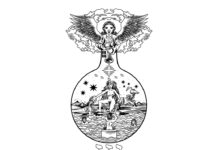
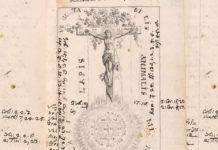
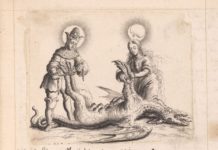






Die hier vertretene These, Rudolf Steiner sei ein Schüler von Alois Mailänder gewesen, ließ sich bisher (noch) nicht einwandfrei bestätigen. Aber dass wesentliche Personen im Umkreis von Rudolf Steiner (Friedrich Eckstein, Franz Hartmann, Marie Gebhard, Günther Wagner, Wilhelm Hübbe-Schleiden…) Schüler von Alois Mailänder waren, kann nachgewiesen werden.
Ich habe dies in meinem Buch “Wie erlangt man Erkenntnisse der höheren Welten? von Rudolf Steiner und das Yoga Sutra” nachgewiesen (auf S. 138-148)
Dear Richard: Having heard about your work on this topic for some time, I now have read your piece. I find it convincing and would like to have more information about Ekstein, from whom Steiner may have had instruction in kabbalah. And thank you for the excellent endnotes.
Sollte hier behauptet werden, Mailänder wäre Christian Rosenkreutz, so muss man sagen, dass dies nur Ünerlegungen des abstrakten Gehirns sind. Es war nicht Mailänder. sondern eine ganz andere Person mit einem kurzen Leben, die zu der Zeit inkarniert war.
Wow! Dreieichenhain, the domain of the three I’s. What an amazing picture-confirmation. Do you know who/how/when named this area?
Dreieichenhain means “Three Oak Grove.”
Correction: Dreieichenhain means “Three Oaks Grove.”
Max Heindel, even in the early days of the “Cosmo Conception,” never claimed to be an extension of the original Rosicrucian group. He claimed to be the initiator of a renaissance movement, initiated by a true Rosicrucian Adept in Germany, with whom he met outside Berlin.